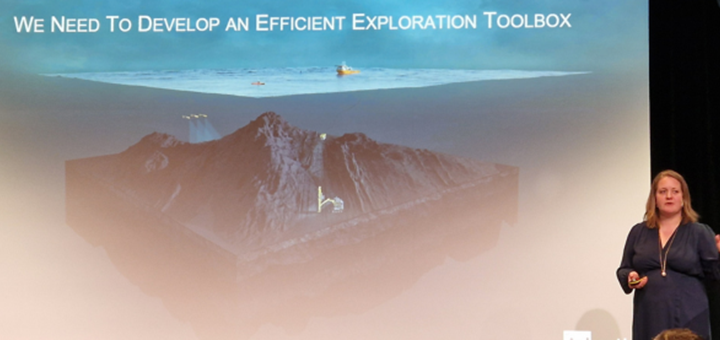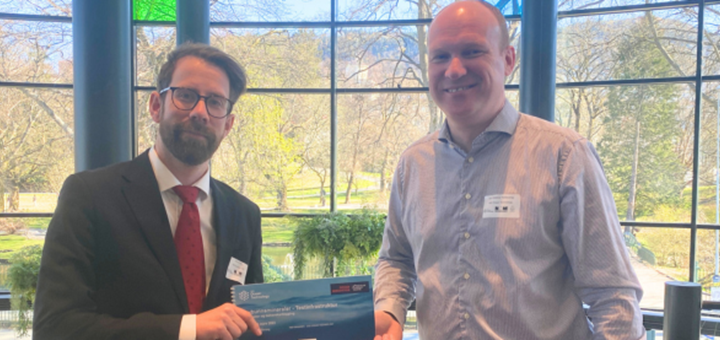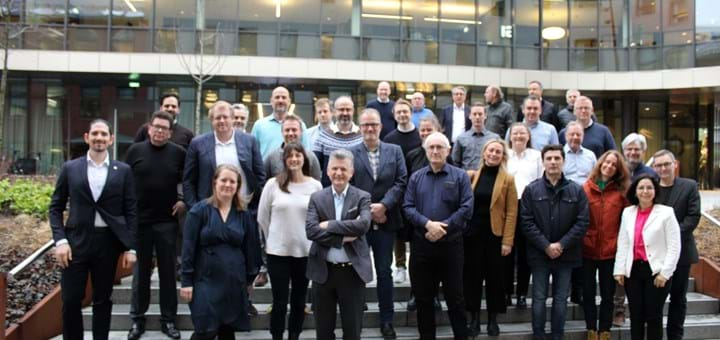Misconceptions about Seabed Minerals: An Interview with Jon Hellevang
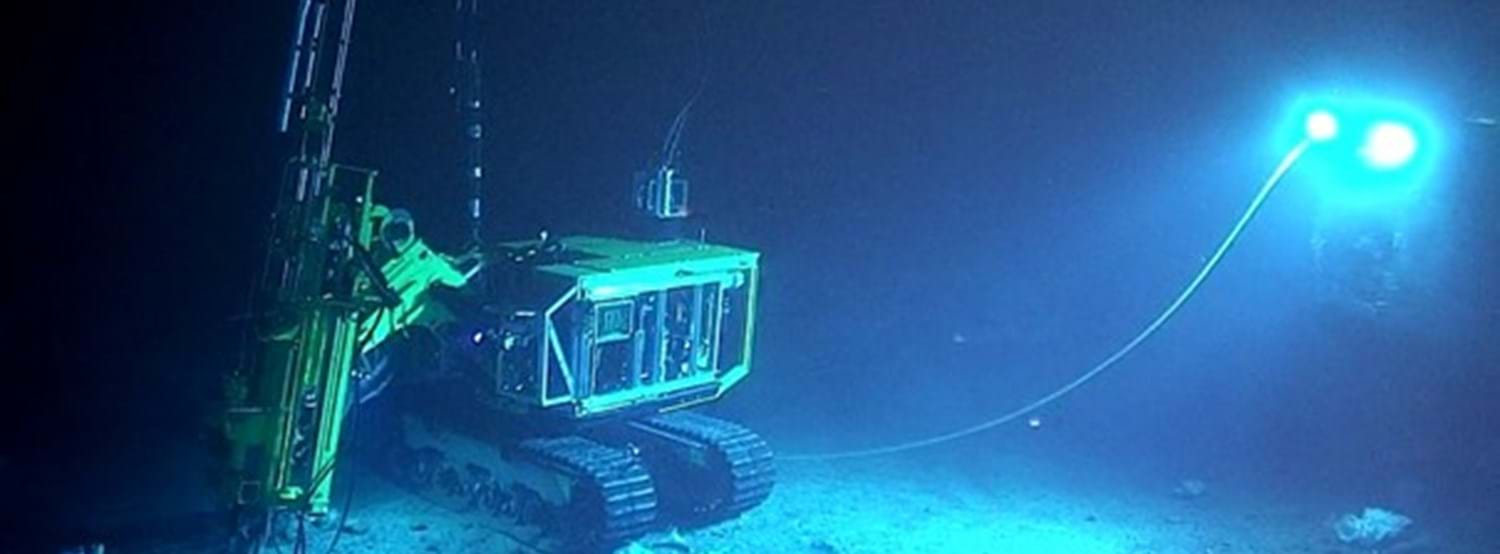
The debate surrounding seabed minerals is rapidly gaining momentum, sparked by the Norwegian government's proposal to open up for industrial activities.
People and organizations are expressing concerns that the opening process for seabed minerals is moving too fast with limited knowledge.
To shed light on this complex issue and some of the common misconceptions, we sat down with Jon Hellevang, the R&D Manager at GCE Ocean Technology.
Q: The government's proposal to open up for seabed mineral activities has sparked a lot of public debate and concern. Can you shed some light on why people are worried, and what misconceptions might be circulating regarding this issue?
A: Firstly, I think t's crucial to better understand the government's ambition for this initial general impact assessment, the planned steps forward and the areas under consideration.
If people expect all questions and possible consequences of seabed mining to be answered at this stage, I can understand if they are disappointed.
However, to me this is not the case, and the government is in my opinion very specific on the need for more knowledge to be gathered via a step-vice process. Furthermore, is it vital to understand the difference between exploration and possible areas relevant for mining.
The areas suggested opened for exploration are several orders of magnitude larger than what would be considered for mining. This is much like oil and gas or minerals on land. Large scale exploration is needed to narrow down on the areas of interest. Seabed minerals are expected to be located in an area far less than 1% of the suggested opening area.
Hence it should be no problem to e.g. meet the target to protect 30% of the planets land and ocean areas.
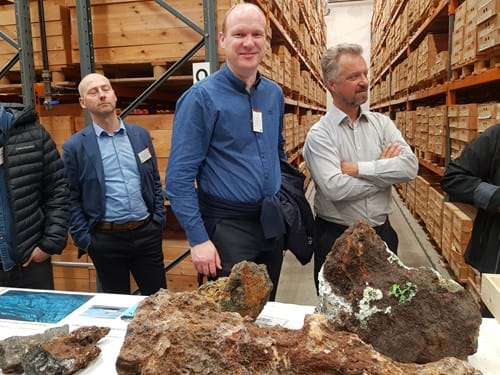
Photo: Jon Hellevang with a seabed mineral sample at the Norwegian Petroleum Directorate
Q: One major concern in the public debate is the pace at which seabed mineral activities are moving forward with limited knowledge. What's your perspective on this, and how do you envision the timeline for addressing these concerns?
A : It is important to be aware that no one is currently planning seabed mining in Norway. Yes, there are some promising exploration results and resource estimates, but there's no bankable resource yet.
Significantly more exploration is needed to establish the resource potential and level of environmental impact. The government is very clear on the need for far more detailed environmental studies and project specific impact assessments prior to any mining licenses being granted.
Technologically, I think it is possible to start seabed mining activity in Norway in ten years’ time. However, this will depend on a number of factors from environmental considerations, resource potentials to offtake/processing.
Q: Environmental concerns are at the forefront of this debate. Can you elaborate on some of the specific environmental questions and how to best address these?
A: Lack of knowledge about the deep sea ecosystem is a major concern by many people. Again, it is important to keep in mind the huge difference between exploration and the possible mining area.
Related to the impacted area, sediment plume is a key concern by many people - extending the impacted area beyond the mining site. This is a topic where the industry is working with different solutions to minimize the impact, which will be interesting to follow.
Most research in Norway is currently conducted on/at active hydrothermal system, which is not targeted for mining by the industry. Environmental studies should, to a larger extent, be targeting areas relevant for mining, as well as regional studies to better understand the ecosystem and connectivity between areas in the deep sea.
I think it is important to perform environmental studies in parallel with resource mapping. This makes the work far more efficient as well as targeting the studies to areas with the highest resource potential and lowest environmental impact.
It is important not to forget that mining comes with an impact regardless of location. A key driver for seabed mining is the belief that it can be performed with a lesser negative environmental and climate impact compared to current land-based mining.
Q: What projects is GCE Ocean Technology involved in, and how are they contributing to our knowledge in this area?
A: GCE Ocean Technology's members and partners, are actively involved in several projects aimed at strengthening the knowledge base about the deep sea environment and its resources.
Some of these projects include EcoSafe, EMINENT, ESG handbook, and Test Infrastructure. These projects were established to gathering many of the necessary data and insights to make informed decisions about seabed mineral activities.
Q: What will be your recommendation to the parliament when deciding on how to move forward with seabed minerals in Norway?
A: I would recommend moving forward based on the government’s report to the parliament.
Yes, we need more independent research, but we also need the industry's capabilities in terms of funding, knowledge and equipment. The current deep sea exploration is limited to a few weeks using one vessel and ROV.
The industry has capabilities far beyond this, so a private-public collaboration, as suggested by the government, will be key to succeeding.
Earlier this year we made a list of recommendations for Norwegian action.
For the 2024-budget I would like to be even more specific and suggest three budget posts which I believe they should be able to agree upon independently of the ongoing opening process:
- 60 million NOK to the Mareano-programme
- 60 million NOK extra to NPD for deep sea exploration
- 20 million NOK for the Centre for Deep Sea Research at UiB for more research expeditions
Q: For those interested in learning more about seabed minerals and your perspective on the topic, are there any articles or resources they can refer to?
A: Yes, if you would like to learn more about the topic of seabed minerals, I've written two articles in Teknisk Ukeblad (TU).
Unfortunately, these articles are available in Norwegian only, but they provide valuable insights into the subject.
You can find them under the titles:
Thank you for the insight Jon.
Contact Information
Kjersti Boge Christensen
Communication Manager


Ocean Connect
Join us for a thought-provoking sessions with among other Jon O. Hellevang as we discuss the future energy mix at Ocean Connect in Bergen 26 October. Secure your spot.

